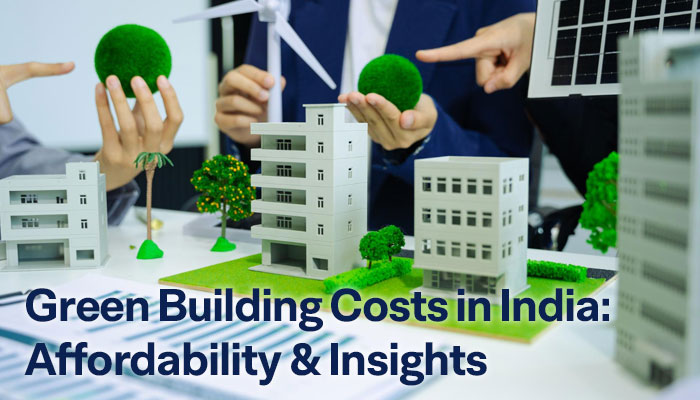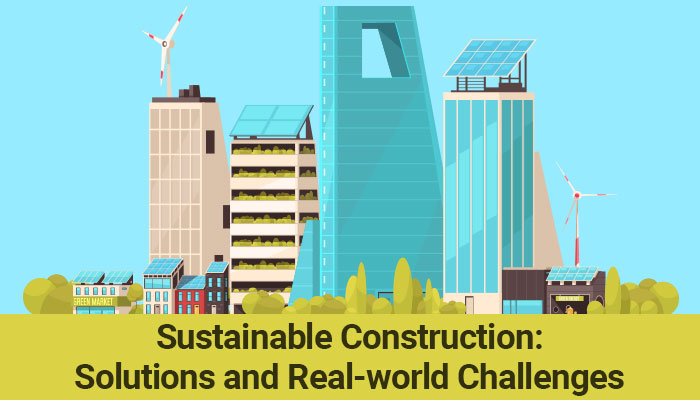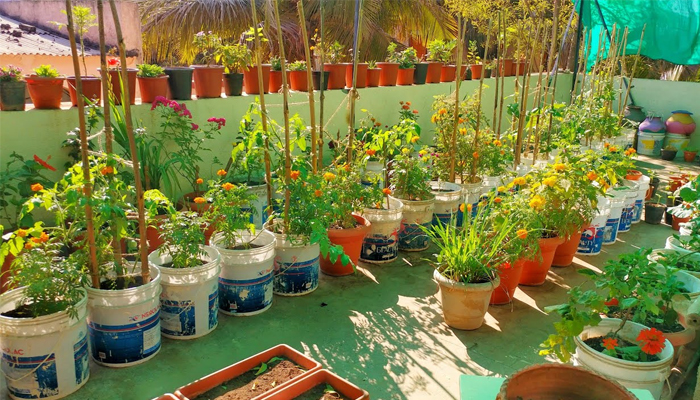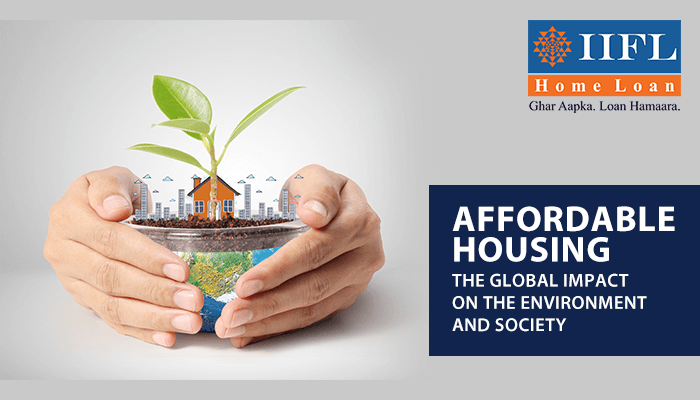Impact of Green Construction in Improving Indoor Air Quality & Health

India's sustainable development journey is expected to be led by green construction, which will help in mitigating environmental impacts, conserve resources, and ensure a healthier and more resilient environment for future generations. Green construction not only reduces a building's carbon footprint but also has a positive impact on indoor air quality (IAQ) and the overall health of occupants, making it one of its most crucial benefits.
Financial institutions like IIFL Home Loans are supporting similar initiatives, especially now, given the country’s massive energy demand, and the construction sector accounting for a significant portion of energy consumption. If you are a developer looking to transition, you should know the impact of green construction on improving IAQ and the health of your occupants.

Role of Green Construction in Enhancing Indoor Air Quality & Health
Some important green construction techniques and their role in improved indoor air quality and the health of the occupants are:
-
Reducing Harmful Emissions
Conventional construction materials and finishes often release volatile organic compounds (VOCs) and other airborne toxins into the indoor environment. These can lead to health issues, such as respiratory irritation. Green construction emphasizes the use of low-VOC or VOC-free materials and paints, reducing occupants' exposure to hazardous chemicals and enhancing IAQ.
-
Energy Efficiency and Cost Savings
Buildings that are "green" are created with the intention of being energy-efficient, which means they use fewer resources such as electricity and water. These types of buildings use HVAC systems and building materials that help to maintain consistent indoor air quality while also reducing utility bills.
IIFL Home Loans’ Green Value Partner initiative aims to work with developers to develop affordable green buildings in the country. The company offers end-to-end support from conception, initial assessment to final certification.

-
Enhancing Ventilation and Air Circulation
Green buildings incorporate advanced ventilation systems that regulate temperature and humidity. Implementing efficient ventilation, natural airflow solutions, and smart ventilation strategies are key aspects of green construction to maintain high IAQ.
-
Embracing Biophilic Design
A design approach called biophilic design has become popular in green construction. This method incorporates living green walls, indoor plants, and natural light to improve indoor air quality, reduce stress, and promote the well-being of occupants. Its aim is to bring nature into buildings.
-
Addressing Mold and Moisture Issues
Mould growth harms indoor air quality and causes respiratory issues. Green construction prevents mould with advanced design, water management, and mould-resistant materials, protecting occupants' health.
-
Improving Thermal Comfort
When constructing buildings with a green approach, the focus is on prioritizing the health and productivity of the occupants. This is done by ensuring proper thermal comfort through the use of insulation, energy-efficient windows, and shading techniques. These techniques help to maintain optimal indoor temperatures, which ultimately promotes overall well-being.
Wrapping Up!
Embracing green building practices not only benefits the environment but also significantly enhances indoor air quality and the overall well-being of building occupants. By selecting low-VOC materials, prioritizing proper ventilation, integrating biophilic design, and addressing moisture issues, you can create healthier, more sustainable spaces that positively impact the lives of those who inhabit them. Now with green investments and support from financial institutions like IIFL Home Loans, you have the power to create a rewarding ecosystem in the country.
FAQs
1. Does a green building design improve the chances of better indoor air quality?
Yes, green buildings typically have better indoor air quality due to their emphasis on using eco-friendly materials, improved ventilation systems, and reduced exposure to harmful pollutants, resulting in healthier and more breathable environments for occupants.
2. How can sustainable building materials improve the health of the occupants?
Choosing sustainable building materials can lead to a healthier indoor environment due to their lower emission of toxins and reduced allergens. Moreover, these materials provide better thermal and acoustic properties, resulting in improved comfort and well-being.
3. What are some green construction materials used in green building architecture?
Some examples of sustainable building materials are recycled steel and concrete, reclaimed wood, low-emission insulation materials, energy-efficient windows, and eco-friendly roofing options such as green roofs or solar panels.
4. What is IIFL Home Loans’ Green Value Partner?
IIFL Home Loans' Green Value Partner initiative supports green construction or sustainable building practices from concept to completion. For more information, check out their website.
5. Can eco-friendly construction help deal with climate change?
Yes, eco-friendly construction reduces greenhouse gas emissions, saves energy through efficiency and renewable integration, and employs resilient designs, aiding in tackling climate change.
Tags
Disclaimer: The information contained in this post is for general information purposes only. IIFL Home Finance Limited (including its associates and affiliates) ("the Company") assumes no liability or responsibility for any errors or omissions in the contents of this post and under no circumstances shall the Company be liable for any damage, loss, injury or disappointment, etc. suffered by any reader. All information in this post is provided "as is", with no guarantee of completeness, accuracy, timeliness, or of the results, etc. obtained from the use of this information, and without warranty of any kind, express or implied, including, but not limited to warranties of performance, merchantability, and fitness for a particular purpose. Given the changing nature of laws, rules, and regulations, there may be delays, omissions, or inaccuracies in the information contained in this post. The information on this post is provided with the understanding that the Company is not herein engaged in rendering legal, accounting, tax, or other professional advice and services. As such, it should not be used as a substitute for consultation with professional accounting, tax, legal or other competent advisers. This post may contain views and opinions which are those of the authors and do not necessarily reflect the official policy or position of any other agency or organization. This post may also contain links to external websites that are not provided or maintained by or in any way affiliated with the Company and the Company does not guarantee the accuracy, relevance, timeliness, or completeness of any information on these external websites. Any/ all (Home/ Loan Against Property/ Secured Business Loan/ Balance Transfer/ Home Improvement Loan/ NRI Home Loan/ Home Loan for Uniformed Services) loan product specifications and information that may be stated in this post are subject to change from time to time, readers are advised to reach out to the Company for current specifications of the said (Home/ Loan Against Property/ Secured Business Loan/ Balance Transfer/ Home Improvement Loan/ NRI Home Loan/ Home Loan for Uniformed Services) loan.
 Login
Login






















